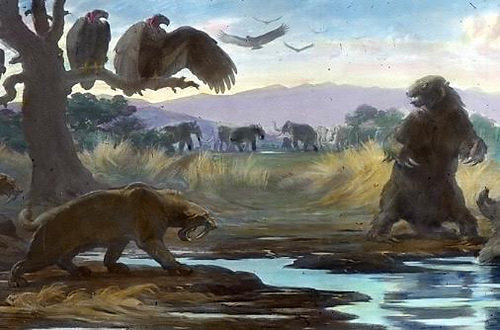
UNIVERSITY OF ADELAIDE—Studies of bones from Ice Age megafaunal animals across Eurasia and the Americas have revealed that major increases in environmental moisture occurred just before many species suddenly became extinct around 11-15,000 years ago. The persistent moisture resulting from melting permafrost and glaciers caused widespread glacial-age grasslands to be rapidly replaced by peatlands and bogs, fragmenting populations of large herbivore grazers.
Research led by the Australian Centre for Ancient DNA (ACAD) at the University of Adelaide, published today in Nature Ecology and Evolution, has revealed that the ancient bones preserve direct biochemical evidence of the environmental upheavals, which can be traced through time.
Using 511 radiocarbon dated bones from animals such as bison, horse, and llamas the team was able to investigate the role of environmental change in the mysterious megafaunal extinctions, which claimed the vast majority of existing large land animals such as giant sloths and sabre-toothed cats.
“We didn’t expect to find such clear signals of moisture increases occurring so widely across all of Europe, Siberia and the Americas,” says study leader Professor Alan Cooper, ACAD Director. “The timing varied between regions, but matches the collapse of glaciers and permafrost and occurs just before most species go extinct.
The international team of researchers, including the University of Alaska Fairbanks, University of Oslo, the Yukon Government, and palaeontologists across Russia and Canada, measured nitrogen isotopes preserved in dated ancient animal bones and teeth recovered from permafrost areas and caves across Europe, Siberia, North and South America. They found distinctive biochemical signals reflecting massive increases of moisture on the landscape.
“Grassland megafauna were critical to the food chains. They acted like giant pumps that shifted nutrients around the landscape”, says lead author Dr Tim Rabanus-Wallace, from the University of Adelaide. “When the moisture influx pushed forests and tundras to replace the grasslands, the ecosystem collapsed and took many of the megafauna with it.”
________________________________________
Extinct megafauna, scene from La Brea Tar Pits. Wikimedia Commons
____________________________________________________
“The idea of moisture-driven extinctions is really exciting because it can also explain why Africa is so different, with a much lower rate of megafaunal extinctions and many species surviving to this day,” says Professor Cooper. “Africa’s position across the equator means that grassland zones have always surrounded the central monsoon region. The stable grasslands are what has allowed large herbivores to persist – rather than any special wariness of hunters learned from humans evolving there.”
Professor Matthew Wooller, of the University of Alaska Fairbanks, says: “We find that on different continents the climate changes happened at different times, but they all showed that moisture increased massively just prior to extinction. The really elegant feature of this study is that it produces direct evidence from the fossils themselves – these extinct creatures are informing us about the climate they experienced leading up to their own extinctions.”
Article Source: University of Adelaide news release
____________________________________________________
Subscribe to Popular Archaeology Premium. Available on all laptops and mobile devices, and still the industry’s best value at only $9.00 annually.
___________________________________________
Travel and learn with Far Horizons.
____________________________________________
This richly illustrated issue includes the following stories: Recent findings shedding new light on the whereabouts of the remains of Philip of Macedon, father of Alexander the Great; how an archaeologist-sculptor is bringing bones of the dead back to life; archaeologists uncovering town life at the dawn of civilization; an exclusive interview with internationally acclaimed archaeologist James M. Adovasio about what makes the Meadowcroft Rockshelter prominent in the ongoing search for the first Americans; what archaeologists are finding at the site of the ancient city of Gath, the home town of the biblical Philistine giant, Goliath; and how scientists are redrawing the picture of human evolution in Europe. Find it on Amazon.com.






